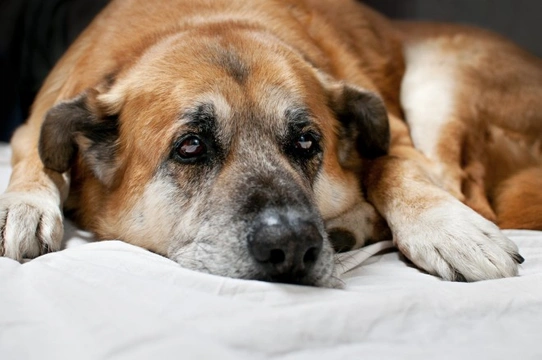
Canine diabetes and its connection to cataracts
Diabetes is a disorder of the body’s insulin levels, which comes in two forms: Type one and type two. Type one diabetes is usually present from birth, and occurs when the pancreas of the dog does not produce sufficient insulin, which is needed to regulate and digest glucose, a type of sugar. Type two diabetes can occur at any age, and is rather different from type one, in that the body produces sufficient insulin, but is unable to utilise it properly to process the body’s natural glucose levels, which come from their food.
If your dog receives a diagnosis of diabetes from your vet, this can be very worrying for the owner, and will require a variety of tests and blood panels to be run on the dog in order to discover how best to manage the disorder. Diabetic dogs will usually need to be fed a special diet to balance out their glucose intake, and in some cases, may require the supplemental administration of insulin as well.
Diabetes is a lifelong condition that is not curable, but can usually be brought under control and managed in order to allow the dog to have an otherwise normal life. However, diabetes has certain risk factors associated with it as well, and can lead to a variety of secondary complications and health issues, all of which may potentially detrimental to the health of the dog.
One of the most common complications and elevated risk factors that accompany diabetes in the dog is cataracts of the eyes, and all owners of diabetic dogs should learn as much as possible about the connection between canine diabetes and cataracts, what this means for dogs, and how to manage the issue. Read on to learn more.
Why are cataracts associated with canine diabetes?
If your dog is diabetic, they run the risk of their blood: glucose levels becoming elevated above the norm, which in its turn can lead to a whole range of problems. The eye of the dog of course contains a lens, which is clear, relatively brittle, and permits your dog to see the world around them. While we think of the eyes as being naturally moist and lubricated, the lens itself is in fact generally dehydrated, containing a moisture content of only 66%, while the rest of the body of the dog is composed of as much as 98% water content.
When the blood: glucose balance of the dog rises above safe norms, the amount of glucose, or sugars, in your dog’s eyes will also rise. The lens of the eyes gains all of the nutrients it needs from this fluid, upsetting the natural moisture balance of the eyes due to the increased sugar level. This leads to the lens becoming opaque and cloudy, to the point that your dog can no longer see clearly through the lens, ultimately causing complete blindness.
The whole process from normal vision to blindness can happen within just a few weeks, and if your dog has not already received a diagnosis of diabetes, is in some cases the first indication that something is amiss.
Can diabetic cataracts be treated?
Cataracts in the dog are generally operable to restore vision, but this surgery cannot be performed until the dog’s blood: glucose levels are stabilised and brought under control. This can take several months to achieve, but generally, over 75% of all dogs that have cataract surgery regain their vision.
Preventing diabetic cataracts in the dog
While cataracts are generally operable, it is of course preferable to prevent them from occurring in the first place. Surgery cannot be performed while the dog’s blood: glucose levels are still out of whack, which means that a diabetic dog that has lost their vision due to cataracts may have to remain blind until surgery is viable. Surgery on a diabetic dog is more challenging in and of itself, as of course any procedure performed has the potential to throw the blood: glucose balance out of kilter again.
In order to avoid your dog developing diabetic cataracts, it is vitally important to keep an eye on the appearance and condition of their eyes, so that any problems that arise can be resolved quickly. Obviously, where possible, preventing your dog from becoming diabetic in the first place is important, and obesity in dogs is the main cause of type two diabetes, so keeping your dog fit and healthy with a well-balanced food intake throughout their life is vitally important.
If you suspect that your dog is diabetic, developing cataracts or is suffering from any other problem, it is vital to get them checked out by your vet as soon as possible, as the sooner a treatment plan is instigated, the more effective it will be. Well managed diabetes should reduce the risks of the dog developing cataracts at all, and so vigilance and good animal husbandry is an important part of prevention.



